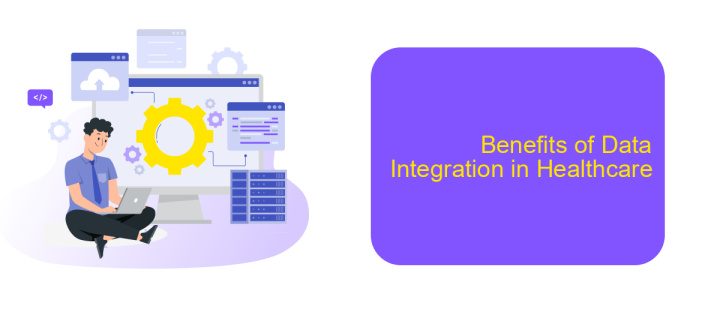Data Integration in Healthcare
Data integration in healthcare is revolutionizing the way medical information is managed and utilized. By seamlessly combining data from various sources, healthcare providers can gain comprehensive insights into patient care, streamline operations, and enhance decision-making processes. This article explores the critical role of data integration in modern healthcare, its benefits, challenges, and the technologies driving this transformative shift.
Introduction: The Need for Data Integration in Healthcare
In today's rapidly evolving healthcare landscape, the integration of data from various sources is crucial for providing high-quality patient care. Fragmented data can lead to inefficiencies, errors, and suboptimal outcomes, making seamless data integration a top priority.
- Improved patient care through comprehensive data access
- Enhanced decision-making with real-time data
- Streamlined operations and reduced administrative burden
- Compliance with regulatory requirements
Services like ApiX-Drive facilitate the integration process by connecting disparate healthcare systems, enabling seamless data flow. This ensures that healthcare providers have access to accurate and up-to-date information, ultimately improving patient outcomes and operational efficiency. Embracing data integration is not just an option but a necessity in modern healthcare.
Challenges of Data Integration in Healthcare

Data integration in healthcare faces numerous challenges, primarily due to the diversity and complexity of healthcare data sources. Hospitals, clinics, and various healthcare providers use different systems and formats for storing patient information, making it difficult to achieve seamless data interoperability. Additionally, the sensitive nature of healthcare data requires stringent security measures to protect patient privacy, adding another layer of complexity to the integration process.
Another significant challenge is the lack of standardized protocols and frameworks for data exchange. This often results in fragmented and inconsistent data, hindering the ability to provide comprehensive care. Services like ApiX-Drive can help mitigate these issues by offering robust data integration solutions that bridge the gap between disparate systems. By automating data transfers and ensuring compatibility across platforms, ApiX-Drive facilitates smoother and more efficient data integration, ultimately enhancing the quality of healthcare delivery.
Strategies for Data Integration in Healthcare

Effective data integration in healthcare is essential for improving patient care, reducing costs, and enhancing operational efficiency. To achieve seamless data integration, healthcare organizations must implement various strategies tailored to their specific needs and technological infrastructure.
- Standardization of Data Formats: Ensuring that data is collected and stored in standardized formats allows for easier integration and interoperability between different systems.
- Utilizing Middleware Solutions: Middleware solutions, like ApiX-Drive, can facilitate the integration process by acting as a bridge between disparate systems, enabling smooth data flow and synchronization.
- Adopting Interoperability Standards: Implementing widely accepted interoperability standards, such as HL7 and FHIR, ensures that different healthcare systems can communicate and share data effectively.
- Data Governance and Security: Establishing robust data governance policies and security measures is crucial to protect sensitive health information during the integration process.
- Continuous Monitoring and Optimization: Regularly monitoring and optimizing data integration processes help identify and resolve issues promptly, ensuring ongoing data accuracy and reliability.
By leveraging these strategies, healthcare organizations can create a cohesive data ecosystem that supports better decision-making, enhances patient outcomes, and drives overall operational efficiency. Tools like ApiX-Drive can significantly streamline the integration process, making it easier to connect various healthcare systems and applications.
Benefits of Data Integration in Healthcare

Data integration in healthcare offers numerous advantages, significantly enhancing the quality of patient care and operational efficiency. By consolidating data from various sources, healthcare providers can access comprehensive patient information in real-time, leading to more accurate diagnoses and personalized treatment plans.
Moreover, integrated data systems streamline administrative processes, reducing the time and effort required for tasks such as billing, scheduling, and reporting. This not only improves productivity but also minimizes the risk of errors and redundancies.
- Enhanced patient care through comprehensive data access
- Improved operational efficiency and reduced administrative workload
- Accurate and timely diagnoses and treatments
- Minimized errors and redundancies
Tools like ApiX-Drive facilitate seamless data integration by connecting various healthcare applications and systems. This ensures that data flows smoothly across different platforms, enabling healthcare providers to focus on delivering high-quality care without being bogged down by technical challenges.
Conclusion: The Future of Data Integration in Healthcare
The future of data integration in healthcare holds immense promise, driven by advancements in technology and a growing emphasis on patient-centric care. As healthcare systems continue to digitize, the seamless integration of data from various sources will be crucial in providing comprehensive and timely patient information. This will not only enhance clinical decision-making but also improve patient outcomes through personalized treatment plans and proactive care management.
One of the key enablers of this transformation is the use of sophisticated integration platforms like ApiX-Drive, which facilitate the seamless connection of disparate healthcare systems. By automating data flows and ensuring interoperability, such services can significantly reduce the administrative burden on healthcare providers. As we move forward, the integration of artificial intelligence and machine learning with data integration platforms will further revolutionize healthcare, enabling predictive analytics and real-time insights that can anticipate patient needs and streamline care delivery.
FAQ
What is Data Integration in Healthcare?
Why is Data Integration important in Healthcare?
What are the common challenges in Healthcare Data Integration?
How can automation tools help in Healthcare Data Integration?
What are the best practices for successful Data Integration in Healthcare?
Apix-Drive will help optimize business processes, save you from a lot of routine tasks and unnecessary costs for automation, attracting additional specialists. Try setting up a free test connection with ApiX-Drive and see for yourself. Now you have to think about where to invest the freed time and money!

